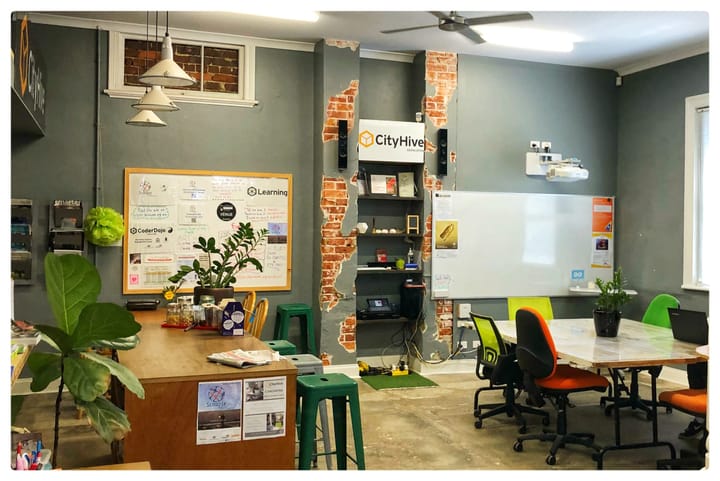Growing WA through Innovation – A Response

Growing WA through Innovation is a report of the Economics and Industry Standing Committee of the Legislative Assembly. Released on 30 June 2016, it presents the Committee’s findings of its inquiry into the ways technological and service innovation can be fostered to expand and diversify the Western Australian economy.
The report provides an extensive review of Western Australia’s innovation ecosystem and is an important state response to the directions forged by the Commonwealth Government’s National Innovation and Science Agenda.
The report’s aim, as the Committee’s Chairperson, Mr Ian Charles Blayney, describes it is ‘to demonstrate to the Australian Government the absolute necessity for it to be much more proactive in how it goes about helping to diversify the state’s economy through innovation’. Innovation, he says, ‘needs to be much more than just another buzzword’.
The report fulfils its aim well. Through the submissions it received and its extensive consultations, the Committee has distilled a number of important findings and turned these into practical recommendations for the Western Australian (WA) Government to consider.
The report specifies the nature of innovation it is concerned with. Innovation, it says, occurs at three levels: (1) incremental change, described as the continuous improvement adopted by all successful organisations; (2) step change, where market or self‐imposed change requires rapid adaptation; and (3) disruptive change brought about by unpredictable and breakthrough technologies and processes. The Committee frames it’s work within, what it describes as WA’s ‘areas of economic and strategic strength’ (para. 2.9). These are identified as mining and energy, agriculture and food, and advanced manufacturing sectors. These are considered to be the sectors in which WA is already strong. The report indicates these sectors align with those identified by the WA’s Science Statement and the Federal Government’s Industry Growth Centre Initiative.
I have two concerns with this framing. The first relates to the way the sector approach is applied, or not applied, as appears to be the case. My second concern is with the selection of sectors.
There is clear value in selecting strategic sectors to support innovation. This allows for strategic interventions to be customised to the specific sector needs, opportunities and dynamics. However, beyond a general review of these sectors in Chapter 2, the report does not provide any specific sector-focused recommendations. Instead, it relies on broad, state and economy-wide proposals. This appears to be a lost opportunity. It can be very useful to select sectors to focus innovation support and to ensure innovation is embedded into broader industry promotion strategies. However, the report is silent on this matter. The role of clusters in innovation is briefly mentioned, but more attention could have been given to working with clusters in strategic value chains.
The process of selecting sectors is also an important consideration. Many criteria can be used to do this and it is important to be clear what these are and why one sector is chosen over another: a historical competence in one sector, maybe less strategic than a possible competence in an emerging, high-growth sector. I am not convinced the three sector categories identified in the report accurately reflect the range of competencies contained within our state now or in the future. In addition to mining and energy and agriculture and food, the 2015 WA Science Statement identified medicine and health, biodiversity and marine science, and radio astronomy. Moreover, the Committee decision to overlook innovation in the renewable energy sector is a major oversight (para. 2.18).
Rather than attempt to align innovation to three broad sector categories, it would have been more useful to consider the potential impact innovation has in WA’s traditional and emerging sectors. It would have been very useful to see a recommendation encouraging the State Government in this direction and describing a mechanism through which this alignment could be achieved.
While these problems with framing are significant, the report largely ignores a sectoral approach to innovation and continues to provide a comprehensive overview of the state’s innovation ecosystem. This review is informative and analytical. It presents a range of views on various subjects and draws out findings, which most contributors broadly appear to agree on.
Among the most Committee’s most valuable findings and recommendations is the need for collaboration. The relatively small size of the state business community and the dominance of micro and small enterprises exacerbates the difficulty of collaborating with universities. Figures from the Small Business Development Corporation, cited in the report, claim 97 per cent of WA business are ‘small’, employing less than 20 people, and 61.9 per cent do not employ anyone beyond their owners. StartupWA is quoted: ‘when entrepreneurs come up with a new concept, product or a service, it is very hard for them to engage with industry. They are an unknown entity; they have no credibility’ (para. 4.52). The conservative nature of the resources sector, WA’s largest economic sector, is also identified as an obstacle to collaboration. However, a number of practical collaboration initiatives are praised in the report, including Woodside’s ‘FutureLab’ initiative.
Overall, a more collaborative culture is required. The report finds there is ‘considerable need for increased levels of effective collaboration between universities and industry’ (Finding 3). However, its recommendation to address this is weak: it encourages the State Government to ‘explore collaborative frameworks across the economy’ (Recommendation 2).
Other more practical and focused proposals are presented in the report, but these are not transformed into recommendations. These include The WA Government’s Western Australian Technology and Industry Advisory Council’s (TIAC) submission that government research funding ‘make a very, very clear, loud statement’ that collaboration is required as a perquisite to financial support (para. 4.61). Other submissions from TIAC and others included suggestions such as:
- Taking a leadership role to ensure the right environment is provided for increased collaboration and innovation;
- Focusing research support to bridging the industry‐university technology transfer gap and providing support for paid industry internships as well as Industry Fellowships to establish joint appointments between industry and academe;
- Facilitating the creation of forums, education and sector building events and activities to increase opportunities for collaboration and support between these players in the Startup Ecosystem;
- Continuing to invest in interface organisations that sit between the players and innovation; and
- Using government purchasing budget to encourage innovation rather than only purchasing items off the shelf––insisting on SME engagement and support specific technology transfer activities that involve SMEs
To be fair, the report does present specific recommendations in line with some of the points above, but too often it foregoes the opportunity to turn general concerns into clear, practical proposals the government can adopt.
The report divides investments in innovation into two broad categories: investing in research and development (R&D), and investing in the commercialisation of ideas. The Committee’s conclusions here are insightful.
More funds should be spent on R&D. While TIAC estimate the total value of all R&D in WA is $4.5 billion, this is only 1.8 per cent of the state’s gross state product; far short of the 2.37 per cent recommended by the Organization for Economic Cooperation and Development. Thus, higher levels of R&D funding are required and the Committee recommends the Government adopt a three per cent target for R&D investment across the economy and monitor and report on progress in reaching this goal. This is a strong and clear recommendation I hope the Government adopts.
Importantly, the Committee also takes the view that WA is not short of investment capital for the commercialisation of new ideas. The problem is, most investors are conservative and not familiar with the entrepreneurial dynamics of new innovative ventures. Western Australian investors ‘need to be better informed as to how to invest in other sectors of the economy’ (Finding 10). The report claims WA has only one venture capital firm in operation in WA.
The problems of access to finance are well spelt-out, but the solutions proposed are weak. The Committee recommends the WA Government promote the presence of venture capital companies through the encouragement of local companies or the attraction of national and international venture capital funds (Rec 6) and considers sponsoring a venture capital conference in Perth (Rec 7). Attracting investors to the state is a good idea, but more could be done to link WA entrepreneurs to the global venture capital sector. This could be done by addressing information asymmetries and facilitating links to investors in other states and overseas. We tend to worry about our brightest and best going overseas, but investment is global. The decision to leave for a more conducive environment for innovation and entrepreneurship may be somewhat connected to finance, but usually it is connected to a whole range of other factors. The WA Government can work with the private sector, including finance and investment providers, to make the overall conditions for innovation more enabling. While state government’s are unable to offer tax incentives in the way the Federal Government can, and should, there are many other functions it can perform. Attraction is a small part of the broader arsenal of strategies.
The report correctly points out that ‘venture capital is not just money: it is a combination of money and mentorship’ (para 582). It also correctly highlights the role of the ecosystem and proximity in facilitating access to the resources innovators require. These are areas the State Government should pay serious attention to.
One of my greatest complaints with the Committee’s work is its silence on the role of local government. Local governments have an important role to play in the WA innovation ecosystem. Currently, its role has largely been to hamper innovation, through obsolete, obscure or rigid regulation. Indeed, the Productivity Commission (2011, 337) has identified this concern and describes how local planning and zoning systems can ‘inadvertently act as a barrier to competition and innovation by entrenching existing patterns of development’. These systems entrench current practices and hinder change because they preserve existing industries and land uses in given areas and maintain the existing look and feel of a given location.
A key part of government’s role in supporting innovation, both state and local, should be to get out of the way where they are not required. This is not an anti-regulation rant. It is a call for smart, relevant and proportionate regulation. How can state and local governments make it easier for businesses to start-up and for new ideas to be tested and brought to market? First, they need to identify any of the ways they unnecessarily impede innovation. Then, they can look at ways of nurturing innovation.
When it comes to nurturing innovation, the Committee’s report present a number of good proposal, some of which I have discussed above. A summary of the recommendations is also provided below. However, I think the Committee has overlooked, what I would call the human side of innovation or the experiences of the entrepreneur. It is easy to discuss flow charts and stages in the innovation lifecycle in a way that treats innovation as an abstract, almost scientific process. Yet, this tends obscure the role of the people who are a part of this process. Some of this is captured in the very good discussion the report has on the culture of innovation and in its references to small business, but innovation is driven by men and women, either on their own or in groups, partnerships or medium to large firms, who are taking calculated decisions to invest their time, money and other resources into bringing a new idea to market. While the report pays significant attention to the skills required for innovation in terms of the broader workforce, very little is said about the skills required for entrepreneurship and innovation management.
Overall, this is an interesting report to read. It has had me diving into a number of the submissions the Committee received and transcripts of consultations. It provides many good, practical recommendations, which I hope the WA Government pick up. As this is done, I hope consideration is also given to some of the gaps in the report and investigate these further.
List of recommendations
The Committee recommends the Western Australian Government:
- Improve its data collection by drawing on the various available sources to better inform decision‐making for industry support and investment.
- Explore the WA:ERA model, as well as those in other jurisdictions, as the basis for collaborative frameworks across the economy.
- Set an aspirational target for R&D investment across the economy of three per cent of gross state product, and monitor and report on progress in reaching this goal.
- Ensure that it is not investing in R&D that could be or is being conducted by industry or other institutions
- Develop an R&D funding strategy to better direct funding to where it will have most impact and function as a catalyst for further investment by business and/or the federal government.
- Promote the presence of venture capital companies in Western Australia through the encouragement of local companies or the attraction of national and international venture capital funds.
- Consider sponsoring a venture capital conference in Perth.
- As a priority, completes the review of the Limited Partnerships Act 1909 and introduces legislation to amend the Act to allow the formation of venture capital limited partnerships in Western Australia.
- Encourage a major commercial anchor tenant(s) to relocate to Technology Park Bentley.
- Undertake a review of Scitech’s future role in the innovation ecosystem to ensure it can meet the challenges presented by the recent and continuing rapid developments in science and technology.
- Appoint the Chief Scientist of Western Australia to the Technical and Industry Advisory Council’s board.
- Support future speaking and networking events that are freely accessible by the business, university and student communities as an important component of its role in supporting innovation in Western Australia.
- Support iPREPWA by providing the funding necessary to make it available to more PhD students in Western Australia, in its current format of three rounds per year.
- Develop an innovation‐specific local procurement policy.
- Ensure that any model developed for the delivery of innovation‐related services does not result in a duplication of services.
- Combine the science and innovation portfolios to form a department and Minister for Science and innovation.
- Form an Industrial R&D Cooperation agreement with Israel.
- Identify the state’s existing intellectual and physical infrastructure, and the potential opportunities these present, given the state’s geographic location and resources; develops programs and initiatives that facilitate bringing that infrastructure and potential opportunities together to generate future comparative advantage through developing new technologies; and ensures that its policies and initiatives emphasise the need to collaborate with other Australian states and Territories as well as overseas jurisdictions.

